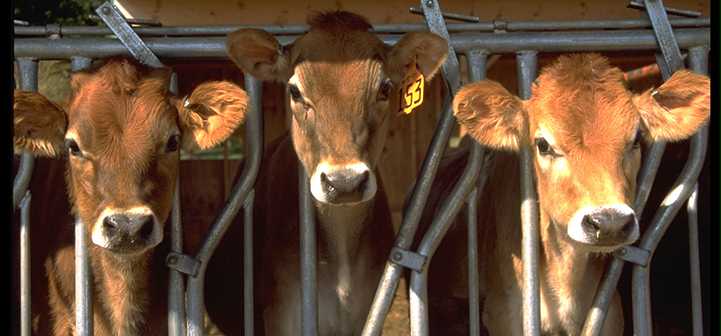
Progeny Testing
As described by Sattler (2013), progeny testing has a three-fold purpose to: 1) provide information for AI sire selection decisions, 2) provide a critical mass of data needed for effective genetic evaluations, and 3) develop AI bulls with accurate evaluations for wide scale AI use. Elite cows were identified, mated to the best sires, and sons were included in a progeny test program to identify, based on daughter performance records, which bulls inherited desirable genes. Progeny test data were the basis for a bull to graduate from a young sire to a proven sire, and have semen made available for widespread use by producers. Furthermore, proven sires (sires with progeny) have long been used as sires of bulls for the next generation. Although progeny testing has been a successful AI center management strategy, it takes more than 3 years, is very expensive, and limits the number of bulls evaluated (Sattler, 2013).
Genomic Selection
Currently, selecting dairy sires for use in AI has shifted from progeny testing to reliance on genomic predictions of daughter health, milk production, and fertility. With genomic selection, the sire and dam of a future sire (next generation) are selected on the basis of DNA marker profiles and mated soon after puberty, with the next generation sire being marker-analyzed for desirable (and undesirable) traits soon after birth, or as an in vitro fertilization (IVF) embryo (Dalton et al., 2017). According to Sattler (2013) this allows AI companies to “test tens of thousands” of bulls rather than a few thousand bulls through a traditional progeny testing program. In addition, rather than wait for progeny test results, today many bulls are used as sire fathers and are widely marketed based on genomic evaluations (Sattler, 2013).
Use of genomic markers has reduced the generation interval, defined as the average age of parents when their offspring are born. Both males and females are contributing to the reduced generation interval, as elite genomic heifers 6 to 8 months of age routinely undergo ultrasound-guided trans-vaginal follicular aspiration (commonly known as ovum pick-up or OPU), followed by in vitro fertilization (IVF) and embryo transfer (ET). According to Garcia-Ruiz et al. (2016) the generation interval of sires of bulls has decreased from approximately 7 to 2.5 years, while dams of bulls has decreased from 4 to 2.5 years. Furthermore, genomic selection has increased the rate of improvement in economically important traits such as daughter pregnancy rate (DPR), productive life (PL), and somatic cell score (SCS) (Garcia- Ruiz et al., 2016). Consequently, Amann and DeJarnette (2012) argue that producers should get more value from each pregnancy resulting from sperm produced by a young marker-selected sire than by a mature progeny-tested sire.
Genomic selection presents many hurdles for AI centers. Embryos or newborn calves with desirable genomic predictions have a much higher acquisition cost than a calf with a good pedigree only (Amann and DeJarnette, 2012). Many sires will be replaced by better bulls before their daughters complete their first lactation; however, young bulls produce 35 to 50% of the sperm of a mature sire (>5 years of age). Consequently, AI centers will require additional facilities (housing, isolation and quarantine, semen collection) to collect semen from nearly twice as many bulls to produce the same total number of marketable straws (Dalton et al., 2017).
An ongoing challenge for the dairy industry is maintenance of data collection infrastructure necessary to support genomic evaluations (Sattler, 2013). A common misconception is that genomics will replace DHIA milk testing. This is not true, as genomics is based on the relationship of the phenotype and genotype. Therefore, genomics requires accurate data collection to establish the reference population to calibrate genomic results and to continually update the reference population (National DHIA, 2011). The flow of data (including milk recording, type classification, and health traits) into the system is critical as the size of the reference population impacts the accuracy of genomic predictions. The Council on Dairy Cattle Breeding (CDCB) currently performs genetic evaluations, which were previously done by the USDA. In the event that progeny test programs were discontinued, the CDCB would be able to assure data continues to be acquired for use in genomic evaluations (Sattler, 2013).
Will progeny testing continue?
According to Sattler (2013) genomic evaluations provide more accurate genetic information on young bulls than what was previously available. Genomic evaluations have, in fact, replaced progeny testing in regard to information for key sire selection decisions. Consequently, AI companies have reduced progeny testing efforts by approximately 20%.
Although the percentage of semen sold from bulls without progeny data has risen from approximately 10% in 2008 to greater than 60% in 2018, progeny-tested sires remain in demand as they continue to compete favorably with young genomic bulls. This is likely a result of the critical mass of data generated via progeny test, which facilitates the accurate evaluation necessary for continued widespread use.
Genomic evaluations continue to be a work in progress, and increased accuracy of genomic evaluations will likely occur in the future (Sattler, 2013). Taken together with increased rates of genetic improvement, the competiveness of young genomic sires will likely improve. For the foreseeable future, though, progeny testing will likely continue to provide enough progeny-proven sires to satisfy market demand (Sattler, 2013).
Source: dairy-cattle.extension.org











